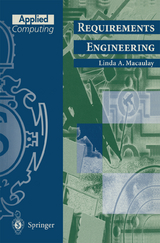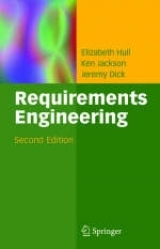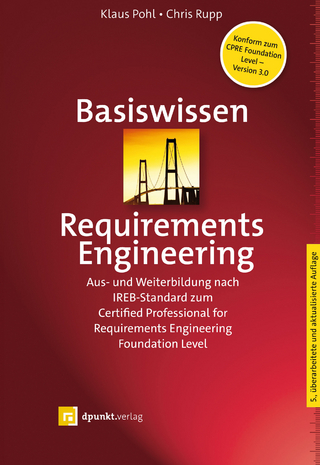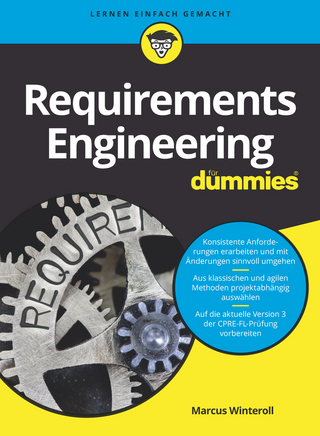Requirements Engineering
Springer Berlin (Verlag)
978-3-540-76006-1 (ISBN)
1 Introduction.- Objectives.- 1.1 Introduction.- 1.2 Why is a Requirements Stage Necessary.- 1.3 What is a Requirement.- 1.4 Requirements Engineering.- 1.5 The Requirements Engineering Process.- 1.6 The Requirements Engineer.- 1.7 Approaches to the Problem of Requirements.- 1.8 Rationale for this Book.- 1.9 Summary.- 2 The Role of Requirements Engineering Techniques.- Objectives.- 2.1 Introduction.- 2.2 The Requirements Engineering Process.- 2.3 Human Communication Within Requirements.- 2.4 Knowledge Development.- 2.5 The Requirements Document.- 2.6 Management.- 2.7 Requirements for RE Techniques.- 2.8 The Contribution of Various Approaches.- 2.9 Summary.- 3 Specific Techniques 1: Organisational Requirements.- Objectives.- 3.1 Introduction.- 3.2 An Illustrative Problem Situation.- 3.3 Soft Systems Methodology.- 3.4 ETHICS.- 3.5 Eason’s Approach to Information Technology and Organisational Change.- 3.6 Eason’s Techniques for Cost-Benefit Assessment of the Organisational Impact of a Technical System Proposal.- 3.7 Summary.- 4 Specific Techniques 2: Group Session Approaches.- Objectives.- 4.1 Introduction.- 4.2 An Illustrative Problem Situation.- 4.3 Characteristics of Group Session Approaches.- 4.4 The Role of the Facilitator.- 4.5 Joint Application Design (JAD).- 4.6 Quality Function Deployment (QFD).- 4.7 Cooperative Requirements Capture (CRC).- 4.8 Summary.- 5 Specific Techniques 3: Interactive Approaches.- Objectives.- 5.1 Introduction.- 5.2 An Illustrative Problem Situation.- 5.3 Designer-as-Apprentice.- 5.4 Focus Groups.- 5.5 Future Workshops, Metaphorical Design and Design Mock-ups.- 5.6 Prototyping.- 5.7 Cooperative Prototyping.- 5.8 Cooperative Evaluation.- 5.9 Summary.- 6 Requirements and the Customer-Supplier Relationship.- Objectives.- 6.1 Introduction.-6.2 Scenario One: An Invitation to Tender (ITT).- 6.3 Scenario Two: Responding to a Specific Customer Request.- 6.4 Scenario Three: Developing a Generic Product.- 6.5 Scenario Four: Tailoring a Product.- 6.6 Scenario Five: Responding to a Business Centre Within the Same Organisation.- 6.7 Scenario Six: Responding to the Needs of a Specific Business Function.- 6.8 Scenario Seven: Responding to the Needs of Colleagues Within the Same Business.- 6.9 Conclusions.- Appendix A: Cost-Benefit Assessment of the Organisational Impact of a Technical System Proposal.- Appendix B: Cooperative Requirements Capture CRC Stage 1: A User Guide.- Appendix C: Cooperative Evaluation: A Run-time Guide.- References.- Author Index.
| Erscheint lt. Verlag | 1.4.1996 |
|---|---|
| Reihe/Serie | Applied Computing |
| Zusatzinfo | XIV, 198 p. 2 illus. |
| Verlagsort | London |
| Sprache | englisch |
| Maße | 155 x 235 mm |
| Gewicht | 340 g |
| Themenwelt | Mathematik / Informatik ► Informatik ► Netzwerke |
| Informatik ► Software Entwicklung ► Requirements Engineering | |
| Schlagworte | Anforderungsanalyse (EDV) • Applied Computing • Communication • Design • Mock-up • Requirements Engineering • System |
| ISBN-10 | 3-540-76006-7 / 3540760067 |
| ISBN-13 | 978-3-540-76006-1 / 9783540760061 |
| Zustand | Neuware |
| Haben Sie eine Frage zum Produkt? |
aus dem Bereich





